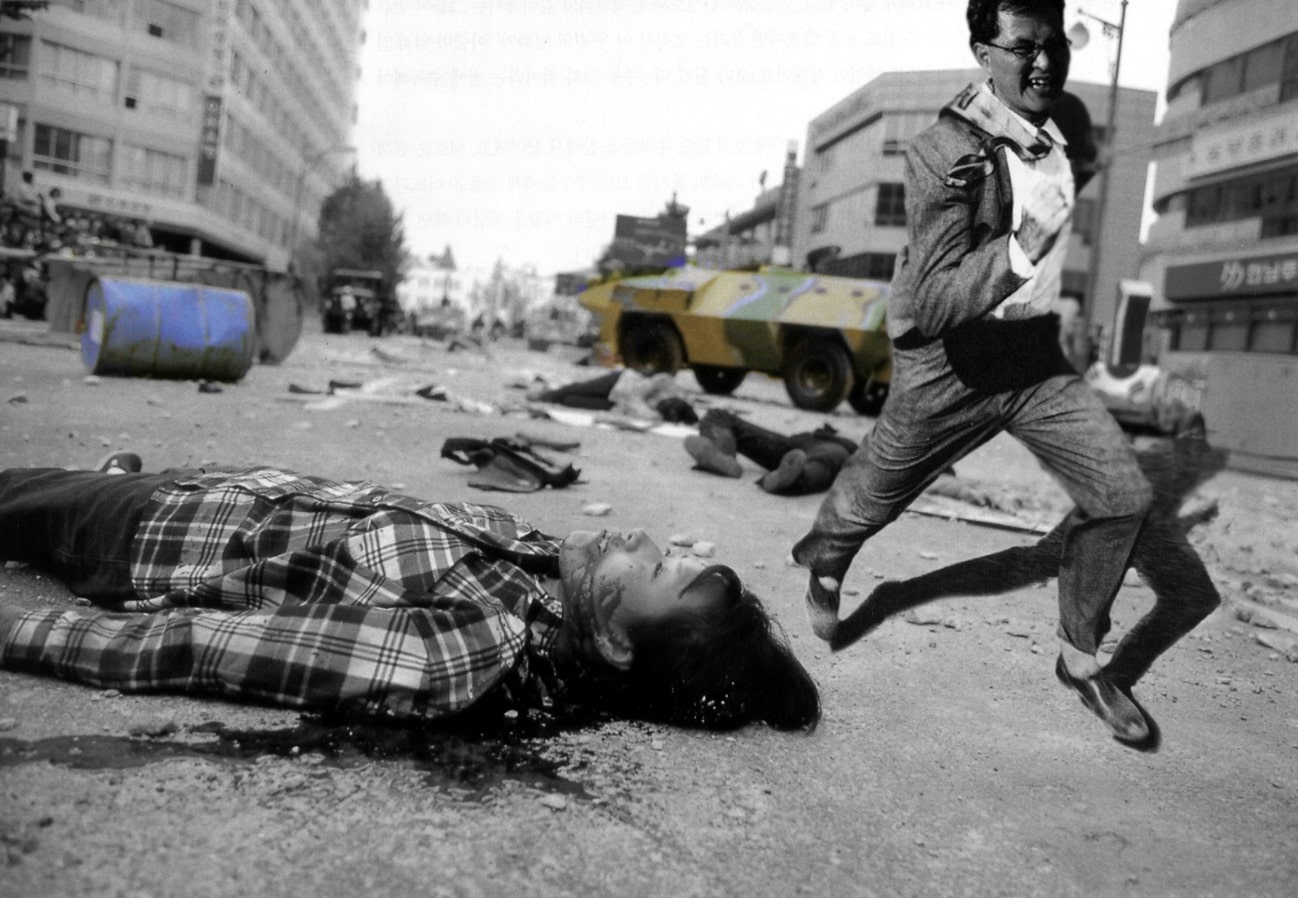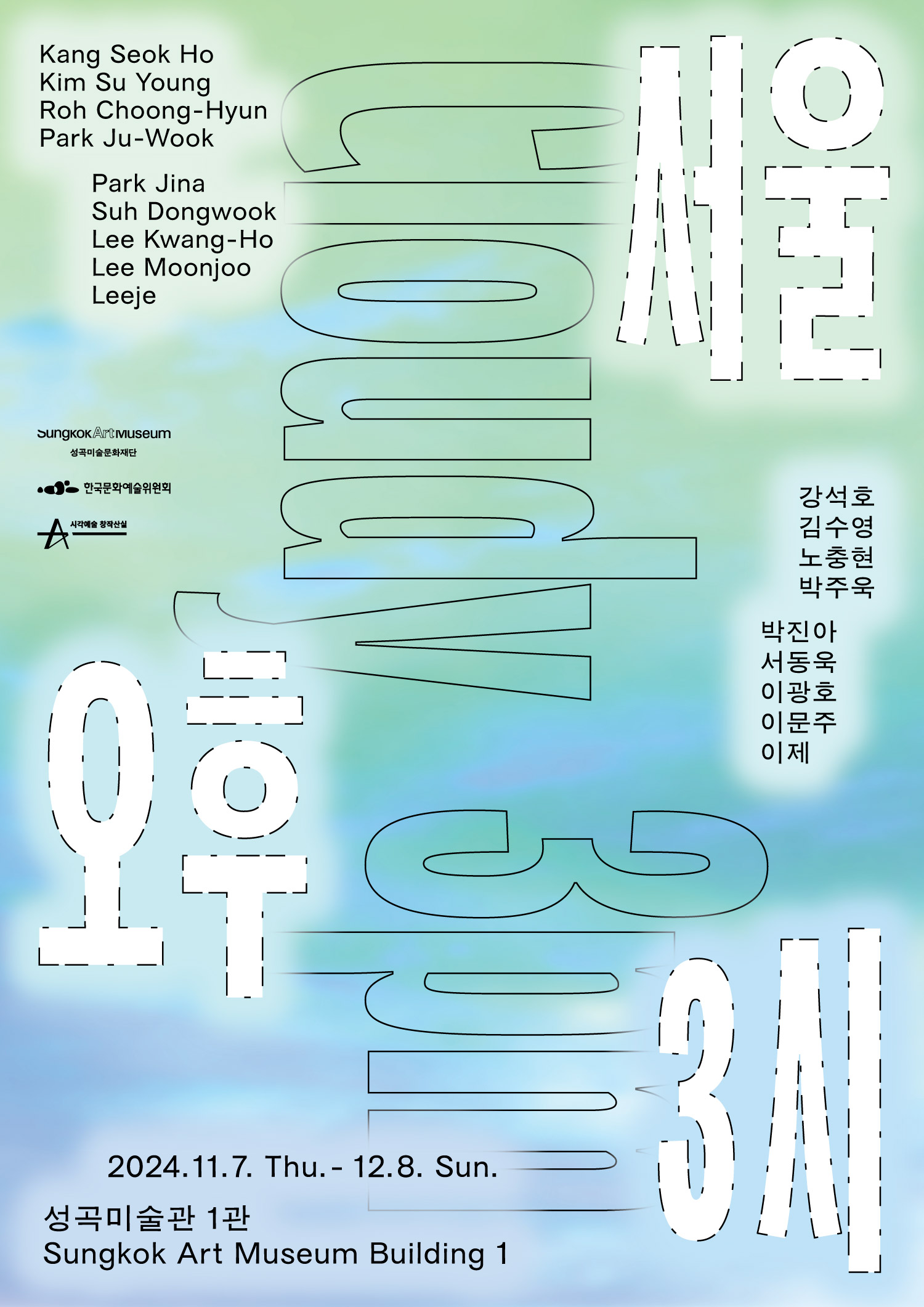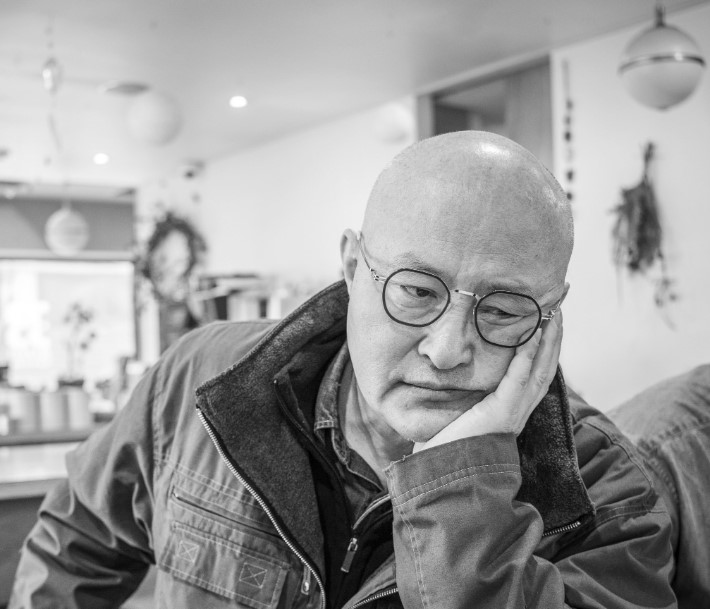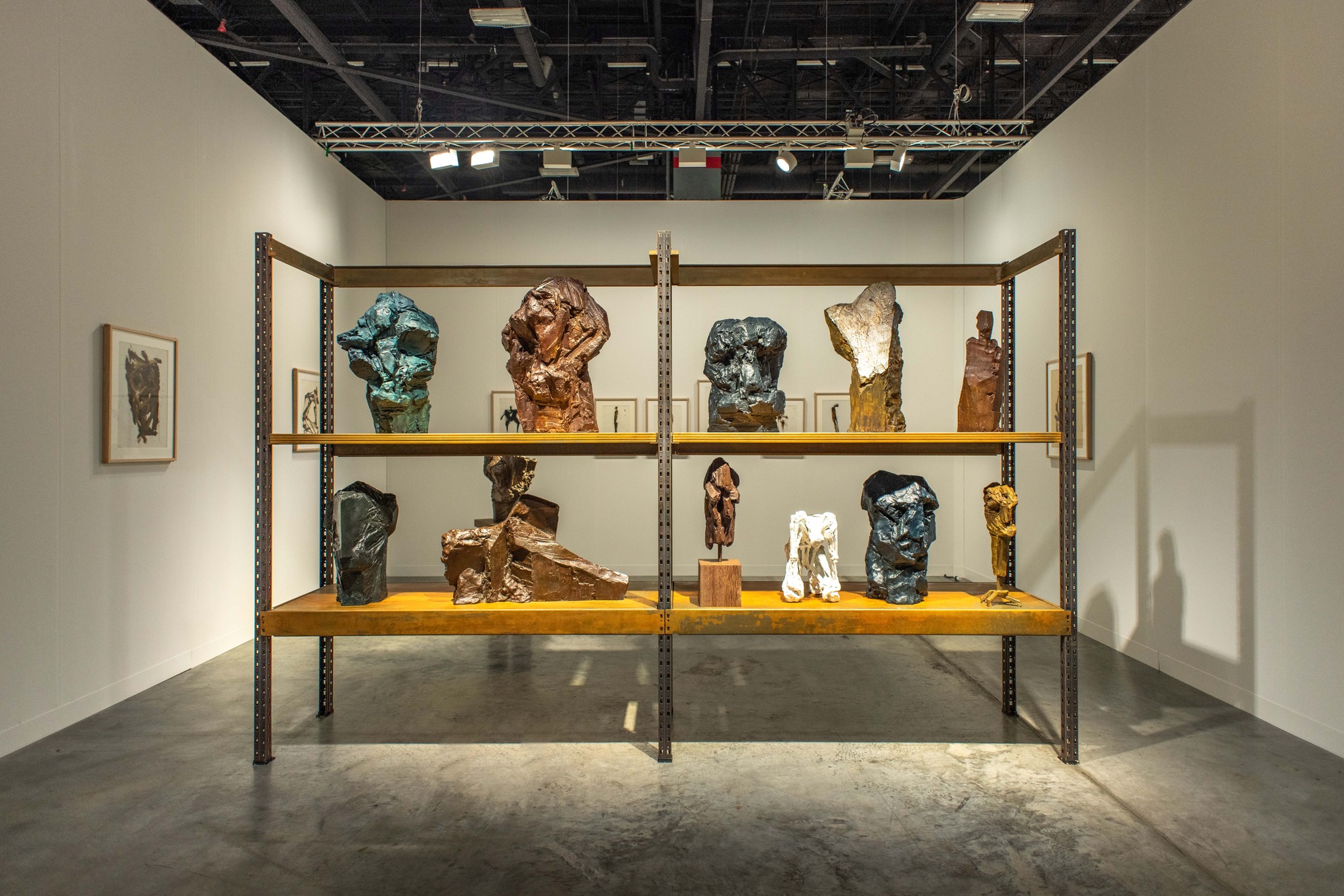Kang
Hong-Goo (b. 1956) is one of the most important artists in Korean contemporary
photography who has experimented with a variety of formats and established an
aesthetic foundation. Since the mid-1990s, the artist has developed a unique
body of work using digital imagery as his primary medium, collecting everyday
visual environments and blurring the lines between reality and fiction,
seriousness and lightness.
Kang
has presented a new phase in Korean contemporary photography by attempting a
new form of documentary photography that approaches the truth through the
expansion of photography as an image and the artist's imagination, rather than
the 'pure photography' or 'straight photography' adhered to by the photography
world at the time, which emphasized the medium's unique properties and sought
to depict the subject in clear and detailed detail. He mainly finds traces left
behind by social and political contexts and captures the contradictory
landscapes of reality in his photographs.
 Kang Hong-Goo, Fugitive
2, 1996 ©Korean Artist Project
Kang Hong-Goo, Fugitive
2, 1996 ©Korean Artist ProjectIn
the 1990s, when digital photography was not as advanced as it is today, the
artist mainly created images by scanning and compositing photographs from
magazines or postcards. In the Who am I (1996-1997) series, for example,
he composited a photograph of his own face into movie scenes to express a kind
of cynicism about the secular desire to be famous.
Following the Who am I
series, which utilized this “composite” technique, Kang explored his identity
as an artist who scrutinizes and questions his place in the world, as well as
his personal identity, through the Fugitive series.
The
Fugitive series originated from the artist's sense of indebtedness to
the Gwangju Uprising. The artist, who was on the island on May 18, 1980,
witnessed the devastating reality in Gwangju, which he later visited. After
witnessing the scene that still bears the marks of that day, the artist
confessed that he wanted to run away from this terrifying history, from a kind
of power, and felt helpless as an individual. Afterward, Kang synthesized his
own image with the staged scenes, and expressed himself as a fugitive running
away from the brutal situation in his series of works.
 Kang Hong-Goo, Greenbelt
– A Lofty Scholar Contemplating Water, 1999-2000 ©Korean
Artist Project
Kang Hong-Goo, Greenbelt
– A Lofty Scholar Contemplating Water, 1999-2000 ©Korean
Artist ProjectKang began working with digital cameras in
earnest after the Fugitive series. The Seashore Resort, Landscape
of Oshoeri, and Greenbelt series were created during that time, when
the artist was walking around with a digital camera and captured the everyday
scenery he encountered. The everyday landscapes he captured reflected the state
of the times.
The Greenbelt series is a series of
works in which the artist traveled around the greenbelt area next to Bucheon,
where he lived at the time, and captured the landscape there. As the artist saw
it with his own eyes, the greenbelt was not as 'green' as its name suggests.
The artist decided to document this contradictory and strange landscape, which
is designated as a place to curb environmental destruction caused by
development, but is surrounded by factories made of plastic houses and streams
polluted by wastewater.
Greenbelt
– A Lofty Scholar Contemplating Water (1999-2000) is a black-and-white photograph of a
stream in the greenbelt polluted with garbage and wastewater and a man looking
down on it, contrasting with the work's subtitle, A Lofty Scholar
Contemplating Water by Kang Huian from the period of Joseon Dynasty. While
the original work depicts a nobleman enjoying nature and gazing at the clear
water, Kang's image shows a man looking down at the polluted waters of the greenbelt
with concern.

Kang Hong-Goo, drama set 6, 2002 ©Parkgeonhi Foundation
Kang Hong-Goo began the series drama set when he accidentally saw an abandoned drama set. The obsolete soap opera set was a strange landscape of mixed time and space, with the Japanese occupation, the Joseon Dynasty, and the 1970s all intermingled, and Pyongyang and Seoul in close proximity. The artist captured the meeting of reality and a fictional version in these 'imaged' places and further emphasized its bizarreness by adding images of fictional figures with no shadows.
 Kang Hong-Goo, Mickey’s
House - Clouds, 2005-2006 ©Korean Artist Project
Kang Hong-Goo, Mickey’s
House - Clouds, 2005-2006 ©Korean Artist ProjectWhile searching for abandoned villages
where people had left due to the logic of development and capturing their empty
and strange landscapes with his camera, the artist created meaningless fake
photographs of fish objects on the streets of Hongdae that had no relationship
to the surrounding context. The reconstruction of images using these objects
later evolved into the series Mickey's House and Trainee.
The Mickey's House series began
after the artist found a toy Mickey's House, a Western-style two-story house,
while wandering around the empty houses left behind by people in the
redeveloped Bulgwang 4 district. The artist placed the Mickey house on the
ruins or walls of the houses that people had left behind and captured the
landscape. The Mickey house, with a house style that everyone dreams of in
childhood, is placed in a place that has lost its human traces, revealing the
contrast between the ideal and the real in a colorful yet empty way.

Kang Hong-Goo, Chronicle of Eunpyeong New Town, 2001-2015 ©MMCA
After moving to Eunpyeong-gu in 2001,
the artist was intrigued by the mixed atmosphere of rural and urban fringes,
and continued to document the landscape of Eunpyeong-gu. While tracing the
intersection and transformation between rural and urban Eunpyeong, the sudden
announcement of the 'New Town Plan' in 2004 changed the landscape of the
village.
As the redevelopment progressed, the town's landscape gradually
disappeared, and the photographs after the new town were transformed into
documentary photographs that recorded the disappearance of the town, contrary
to the original intention. Chronicle of Eunpyeong New Town is a video
compilation of a vast amount of photographs of the transformation of Eunpyeong
New Town from 2001 to 2015, when the old village’s landscape was disappearing and
new buildings were being built.
 Kang Hong-Goo, Study
of Green – White Birch A, 2012 ©Korean Artist Project
Kang Hong-Goo, Study
of Green – White Birch A, 2012 ©Korean Artist ProjectSince 2007, Kang has been traveling
with his camera to capture a variety of green colors rather than empty ruins.
While climbing mountains and capturing green landscapes with his camera, the
artist was reminded of the question, "What is behind the green?”
Wondering
how to unravel this exploration of green, the artist divided the photographic
image and applied paint on top of it. The artist's manipulations invite the
viewer to actively imagine the original image hidden beneath the paint, rather
than just looking at the neatly finished photographic work.
In this way, Kang has been
experimenting with the act of looking through his photography, relentlessly
tracking and capturing the world as we see it. He has always suggested that we
distance ourselves from the manipulated images of the times we live in and look
critically behind them, an attitude that he has pursued relentlessly as an
artist.
"Maybe photography is not about
taking pictures of what we see, but proving what we didn't see. It's
photography into the 'Optical unconscious' that Walter Benjamin talked about.
Photography is about taking pictures of a world that is somehow uncontrollable,
and when I take pictures of that uncontrolled world, the unconscious and
desires of society are contained and revealed in it.
The real role of
photography is not what the photographer is photographing, but what happens
where the photographer doesn't intend it to happen. All I can do is make people
look at the photographs and think, 'What does this mean?" or 'Why is this
happening?’" (MMCA Artist Talk | Kang Hong-Goo)

Artist Kang Hong-Goo ©SeMA
Born in 1956 on the island of Sinan,
Jeollanam-do, Kang Hong-Goo graduated from Mok-po Teachers College and worked
as an elementary school teacher on the island for six years before becoming a
student again and graduating from Hongik University's Department of Painting
and Graduate School. Since his first solo exhibition in 1992, he has held
twenty-seven solo exhibitions at the Kumho Museum of Art, Rodin Gallery, Goeun
Museum of Photography, and Savina Museum of Contemporary Art, and has
participated in many major group exhibitions at the Seoul Museum of Art, the
National Museum of Modern and Contemporary Art Korea, and the Gwangju Biennale.
He is the author of several books on art and has been honored with the 2006 ARKO
The Artist of This Year, 2008 The Prize of Dong-Gang Photography Art, and 2015 The
Artist of This Year-Runa Photo Festival, and his works are in the collections
of the Seoul Museum of Art, the National Museum of Modern and Contemporary Art
Korea, the Gyeonggi Museum of Modern Art, the Busan Museum of Art, and the Samsung
Leeum Museum of Art.
References
- 서울시립 미술아카이브, 서울 : 서울, 어디에나 있고 아무데도 없는 강홍구의 서울 (Art Archives Seoul Museum of Art, Everywhere But Nowhere: Seoul through the eyes of Kang Hong-Goo) :
- 한국문화예술위원회, 강홍구(Kang Hong-Goo) - 어의도에서 은평 뉴타운까지 30년, 강홍구의 작품 세계 (Arts Council Korea, 30 Years of Kang Hong-Goo: From Eouido To Eunpyeong New Town) :
- 코리안 아티스트 프로젝트, 강홍구 (Korean Artist Project, Kang Hong-Goo) :
- 국립현대미술관, 강홍구 | 은평뉴타운 연대기 | 2001 – 2015 (National Museum of Modern and Contemporary Art Korea (MMCA), KANG Hong-goo | Chronicle of Eunpyeong New Town | 2001 – 2015) :





















